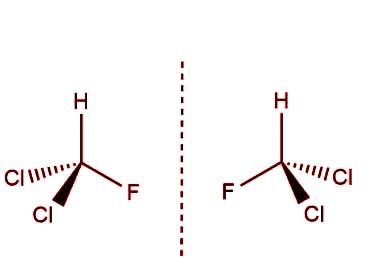To study the saponification of Ethyl Acetate conductometrically
Theory:
The theory behind the saponification of ethyl acetate is that it is a second-order reaction, meaning that the rate of the reaction is directly proportional to the concentration of both the reactants, ethyl acetate (CH 3 COOC 2 H 5) and hydroxyl (OH) ion from NaOH. The overall reaction rate can be represented by the equation:
(dx)/(dt) = k {CH 3 COOC 2 H 5} [NaOH]
Where k is the rate constant, [CH 3 COOC 2 H 5] is the concentration of ethyl acetate, and [NaOH] is the concentration of sodium hydroxide.
The conductance of the reaction mixture is initially due to ions from NaOH, but as the reaction proceeds, the conductance becomes due to the ions from an equal amount of sodium acetate (CH3COONa). If the reaction is carried out with equal concentration of NaOH and ethyl acetate, the rate constant can be calculated from the integrated rate law in the form:
Apparatus Required:
- Thermostat
- Direct reading conductivity bridge
- Dip type conductivity electrode
- Stopwatch
- Large boiling tubes or cylinders (50 mL, 25 mL)
- Pipettes (20 mL and 5 mL)
Chemicals Required:
- 0.01 M NaOH solution
- 0.2 M ethyl acetate
- 0.01 M Sodium acetate (prepared by mixing 0.05 M NaOH solution, a drop of phenolphthalein, and dilute acetic acid until the pink color disappears. Dilute the solution with water to 200 mL in a measuring flask)
Chemical Equation:
The saponification of ethyl acetate is a chemical reaction in which ethyl acetate (CH 3 COOC 2 H 5) reacts with a base, such as sodium hydroxide (NaOH), to form an ester and a salt. The general equation for the reaction is:
CH 3 COOC 2 H 5 + NaOH → CH 3 COONa + C 2H 5OH
where CH 3 COOC 2 H 5 is ethyl acetate, NaOH is sodium hydroxide, CH 3 COONa is the ester (sodium acetate) and C 2H 5OH is ethanol. In this reaction, the ethyl acetate is neutralized by the base, resulting in the formation of the ester and the alcohol.
Procedure:
- Set up a thermostat and conductivity bridge according to the manufacturer's instructions.
- Take 20.0 mL of 0.01 M NaOH and 50 mL of distilled water in a cylinder.
- In another cylinder, take 5 mL of 0.2 M ethyl acetate and 25 mL of distilled water.
- Place 20 mL of 0.01 M NaOH solution and 20 mL of 0.01 M Sodium acetate solution into separate boiling tubes.
- Insert the conductivity electrode into one of the boiling tubes containing the sodium acetate solution.
- Cork all the boiling tubes and cylinders and place them in the thermostat for 15 to 20 minutes to bring the solutions to the same temperature as the thermostat.
- Measure the conductance of the 0.01 M NaOH solution (c0) and the 0.01 M Sodium acetate solution (c∞) using the conductivity bridge.
- Quickly mix the 0.01 M NaOH solution with the ethyl acetate solution and start a stopwatch at the same time.
- Insert the conductivity electrode into the mixture and measure the conductance after every two minutes for 20 minutes.
Note: It is important to wear protective gear and to work in a well-ventilated area when handling chemicals.
Observations and calculations:
- Record the conductance readings at each time point (e.g. every 2 minutes for 20 minutes)
- Using the initial conductance of the 0.01 M NaOH solution (c0) and the initial conductance of the 0.01 M Sodium acetate solution (c∞).
S.No. | Time in minutes | Conductance of NaOH
c0 | Conductance of CH 3 COONa c∞ | Condutance after t minutes ct | Rate Constant (K) |
1. 2. 3. 4. 5. 6. 7. 8. 9. 10. 11. | 0 2 4 6 8 10 12 14 16 18 20 |
|
| C0= .... C2= .... C4= .... C6= .... C8= .... C10= ... C12= C14= C16= C18= C20= | K0= .... K2= .... K4= .... K6= .... K8= .... K10= .. K12= K14= K16= K18= K20=
|
The formula to calculate the average value of specific rate constant is: K = (k 0 + k 2 + k 4 + k 6 + ... + k 20) / 11 = ..............
where k0, k2, k4, k6, ..., k20 are the specific rate constants at each time interval (e.g. 0 min, 2 min, 4 min, 6 min, ..., 20 min) and 11 is the number of time intervals.
Intrepretation of result:
- The average value of the specific rate constant (K) calculated from the experiment should be nearly constant if the saponification of ethyl acetate is assumed to be a second-order reaction.
- The second-order kinetics suggest that the reaction rate is dependent on the concentration of both the ethyl acetate and the sodium hydroxide.
- The calculated K value can be used to determine the order of the reaction and to estimate the rate constant.
- The fact that the K value is constant over the course of the reaction supports the assumption that the saponification of ethyl acetate is a second-order reaction.
- The result also confirms that the reaction is proceeding at a consistent rate and that the reaction is not affected by the presence of intermediate products.
Let me know if you have more questions or if there is a specific topic that you would like to know more about.





If you have any doubts, please let me know